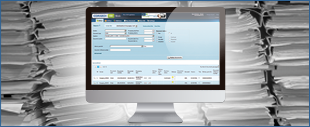4 Challenges For E-invoicing
 E-Invoicing – Hot Topic Worldwide
E-Invoicing – Hot Topic Worldwide
The e-invoicing market has been growing worldwide. According to the Billentis ‘E-Invoicing/E-Billing – entering a new era 2015’ report, out of 500 billion invoices exchanged globally nearly 42 billion will be paperless in 2015. In the next 5 years the annual sustainable growth rate should amount to 10-20%. This estimate is in accordance with the European E-Invoicing Service Providers Association survey, which announced 17% growth rate, based on a comparison of data from 2013 and 2014.
In the past buyers (e.g. retail chains) and service providers were the pioneers of the e-invoicing development. Latin America was the leading region. From the industry point of view retail, healthcare and logistics companies were the pioneers in B2B, just like telecoms in B2C. Nowadays, e-invoicing is present worldwide regardless of the size of a company or a particular branch. Moreover, there are more and more countries where e-invoicing becomes obligatory, at least in the B2G sector, or certain entities are obliged to go paperless.
Benefits Widely Spread
As Gartner and Billentis unanimously stated, e-invoicing projects typically pay for themselves within 0.5-1.5 year. Many case studies confirm that automated e-invoicing processing brings several benefits. The most important include:
- Reduction of lost and missing invoices,
- Improved cash flow,
- Faster approval times,
- Better quality data,
- Reduction of labour and administration costs,
- Less duplicated invoices.
Despite such knowledge and other insights from long-term projects, there are still some opponents in every country, company or branch. The PayStream Advisors’ ‘2014 eInvoicing Benchmark Report’ showed that over a quarter of companies receive no electronic invoices. The main reason why organizations are not implementing e-invoicing is that they believe that current processes are just fine. The biggest challenges include partners on-boarding and integration, multinational legal compliance, internal business processes and lack of knowledge related to profits from such an implementation. Let’s consider it in detail.
Partners On-boarding and Support
Potential problem: Organizations are afraid of time-consuming switching to paperless invoicing with dozens or hundreds of partners and maintaining the project.
Solution: The service providers create advanced tools such as manuals, webinars, workshops, teletraining and offer a multilingual Service Desk for international customers. This is recommended just to prioritize the partners for on-boarding and only help the provider to convince a few opponents.
Multinational Legal Compliance
Potential problem: It is really difficult to follow all the legal issues regarding e-invoicing. Even within the EU there are various local requirements and intricacies, e.g. whether or not we need to use an electronic signature, EDI or other method of authentication. Not to mention the ‘clearance model’ in countries like Turkey or Mexico, where integration with governmental servers is required.
Solution: Due to all the challenging regulations, companies should cooperate with an experienced provider who can guarantee legal compliance in many countries as well as interoperability with other providers.
Internal business processes
Potential problem: Depending on the company’s structure, many departments can be engaged in e-invoicing projects. For sure, the finance department and accounting are mostly concerned, but the sales or purchase department, supply chain or IT department are those who should also be engaged. Moreover departments often use various IT systems and data are scattered within the company. Some companies reluctant to change processes are just trying to negotiate prices for printing and scanning the traditional invoices.
Solution: An e-invoicing project brings significant savings for a company and there should be a person at a high level (e.g. Member of the Board) who supervises the project, sets priorities and engages all the required departments. Finally, e-invoicing (or, going further, purchase-to-pay) requires integration of systems, which brings comprehensive and reliable data enabling enhancement of the decision process.
Data security, Storage…, Awareness?
Potential problem: There are usually some reasons for postponing the project. The curious thing is that there are companies of similar size, with a similar business profile, and cooperating with similar group of customers and vendors, which adopt very different strategies related to e-invoicing.
In the case of the first group e-invoicing has already been beneficial and, due to the network effect, they have made significant savings expressed in real numbers, especially when a business has expanded and gained new partners, both in the case of buyers and vendors. When those companies, mostly ‘invited’ to e-invoicing by their key customer, were preparing their systems they wanted to automate the process and be able to process up to 100% of invoices electronically.
The other group still doesn’t find e-invoicing beneficial. For several years they have cooperated only with one customer who required e-invoicing. Typically they do not want to expand their project until other partners force them to do so.
Solution: The decision makers should start looking into e-invoicing and open their minds to see how it can change the operation of their companies. It’s worth it. In order to encourage business partners to do so, it’s beneficial to publish calculations and present case studies, which make it easier to understand the potential of e-invoicing.
According to many reports mentioned at the beginning of this paper, the e-invoicing market will grow steadily. It’s hard to imagine that companies that have already implemented e-invoicing projects will abandon them. Thousands of new entities will join this community due to financial pressure, partners’ requirements, or legal obligations. It’s only a matter of time. It’s highly likely that in 5, 10 or more years, e-invoicing will become a standard solution and people will smile ironically at the mere mention of print invoices, envelopes, stamps and a delivery time of a few days. Nowadays e-invoicing is the new black.
Should you have any questions about e-invoicing or Comarch EDI e-Invoicing, please don’t hesitate to contact me: Bartłomiej Wójtowicz, Product Manager, Comarch EDI.
 E-Invoicing – Hot Topic Worldwide
E-Invoicing – Hot Topic Worldwide

